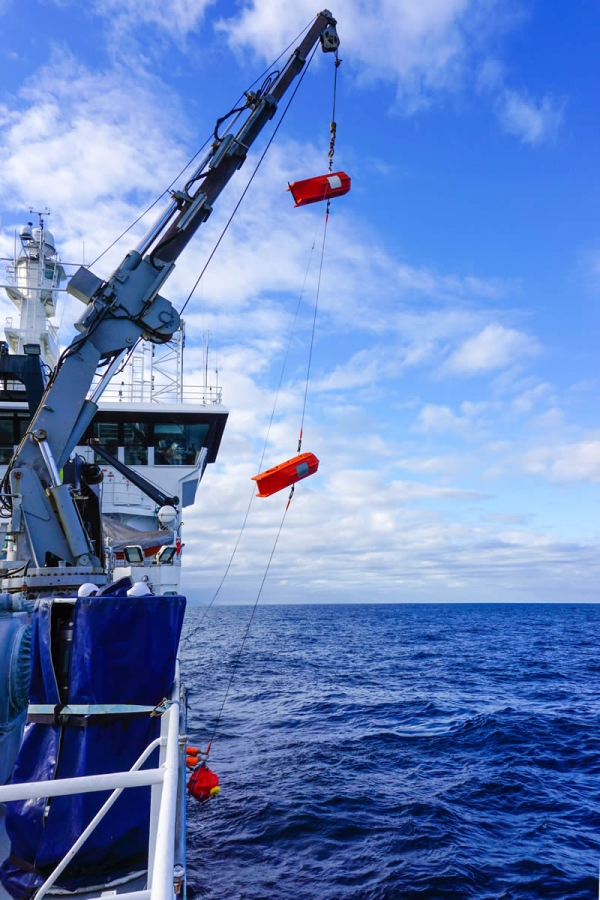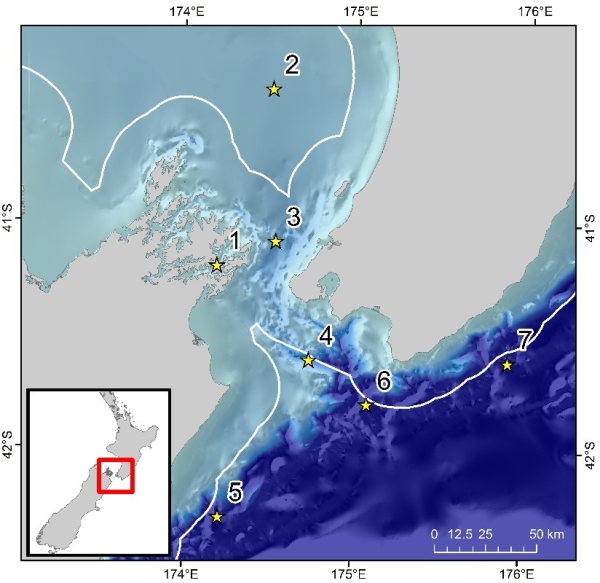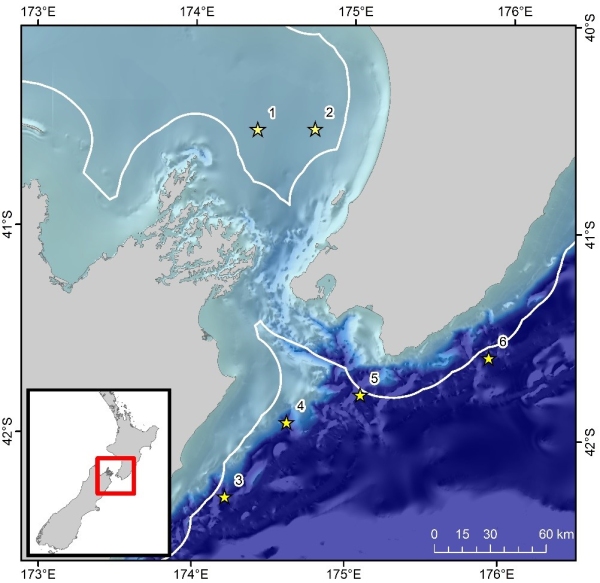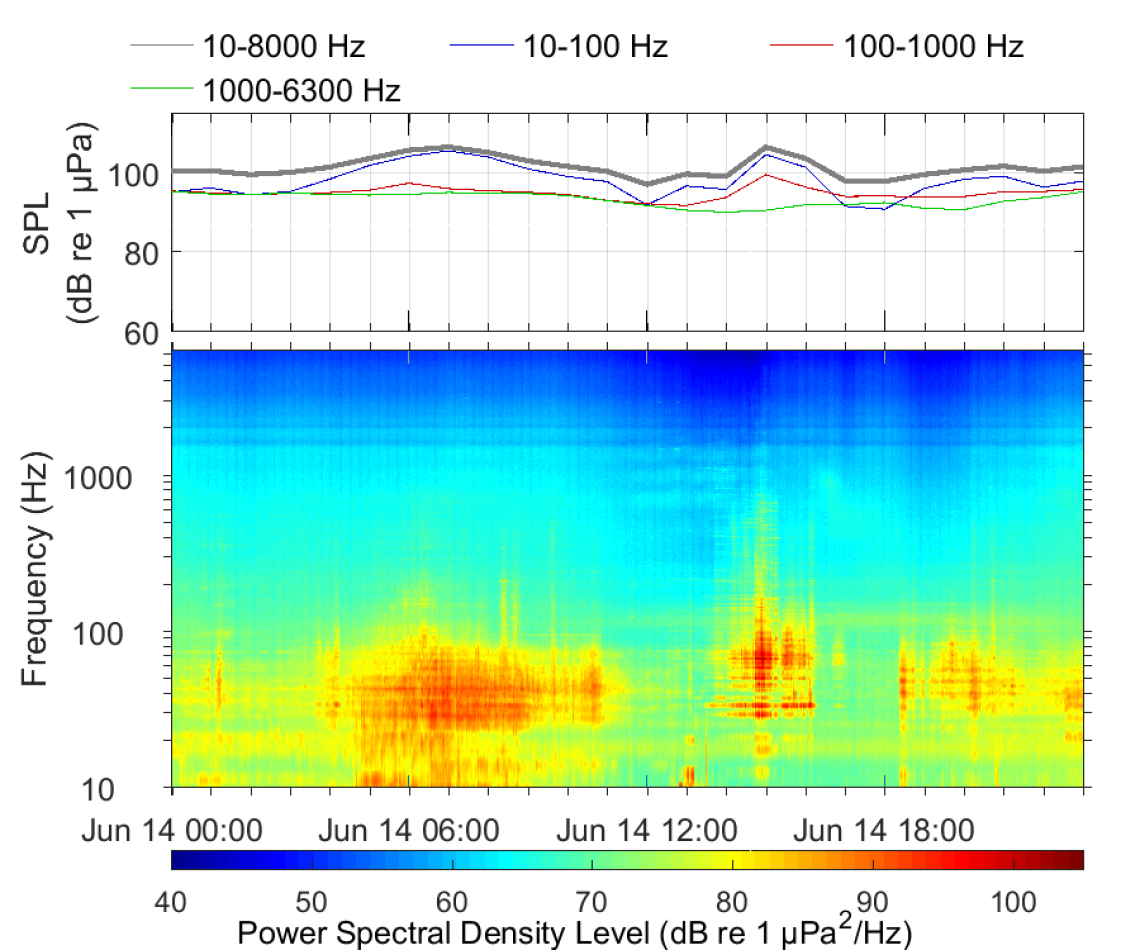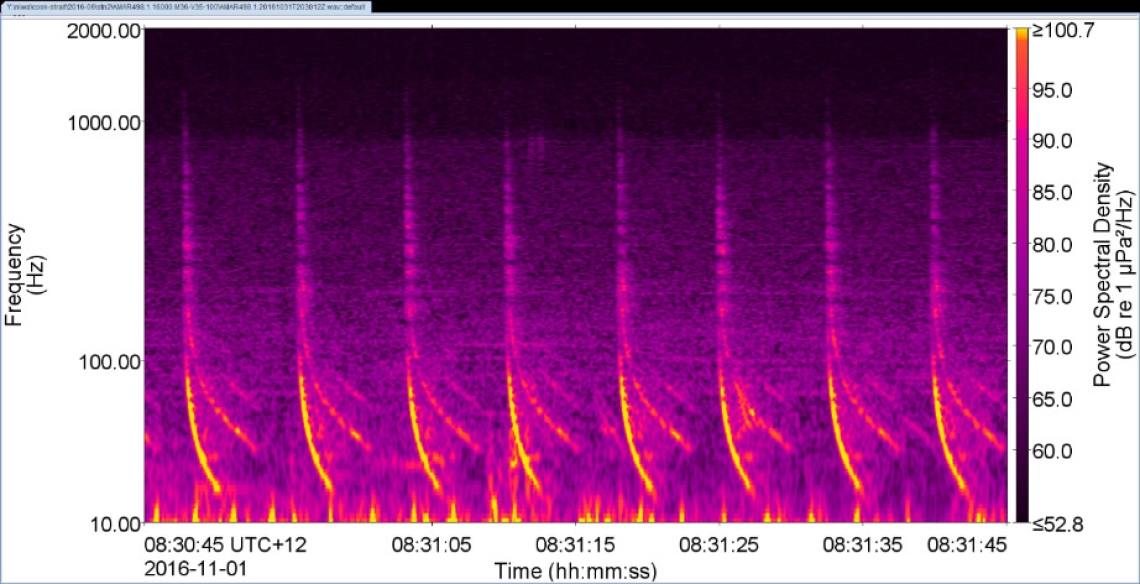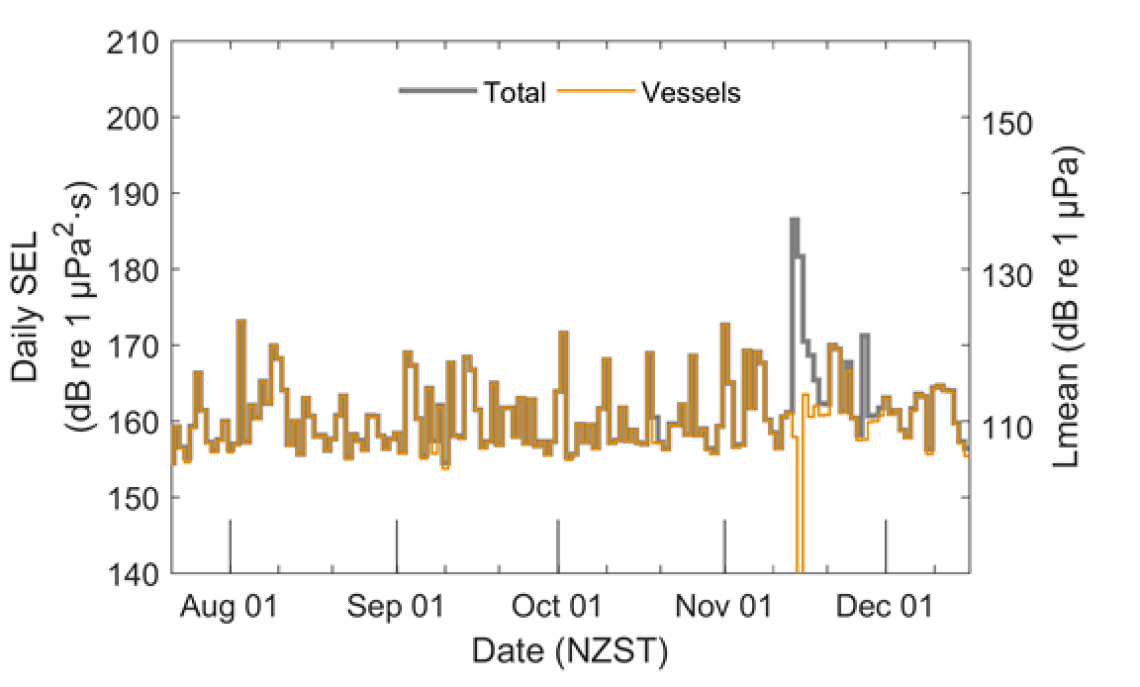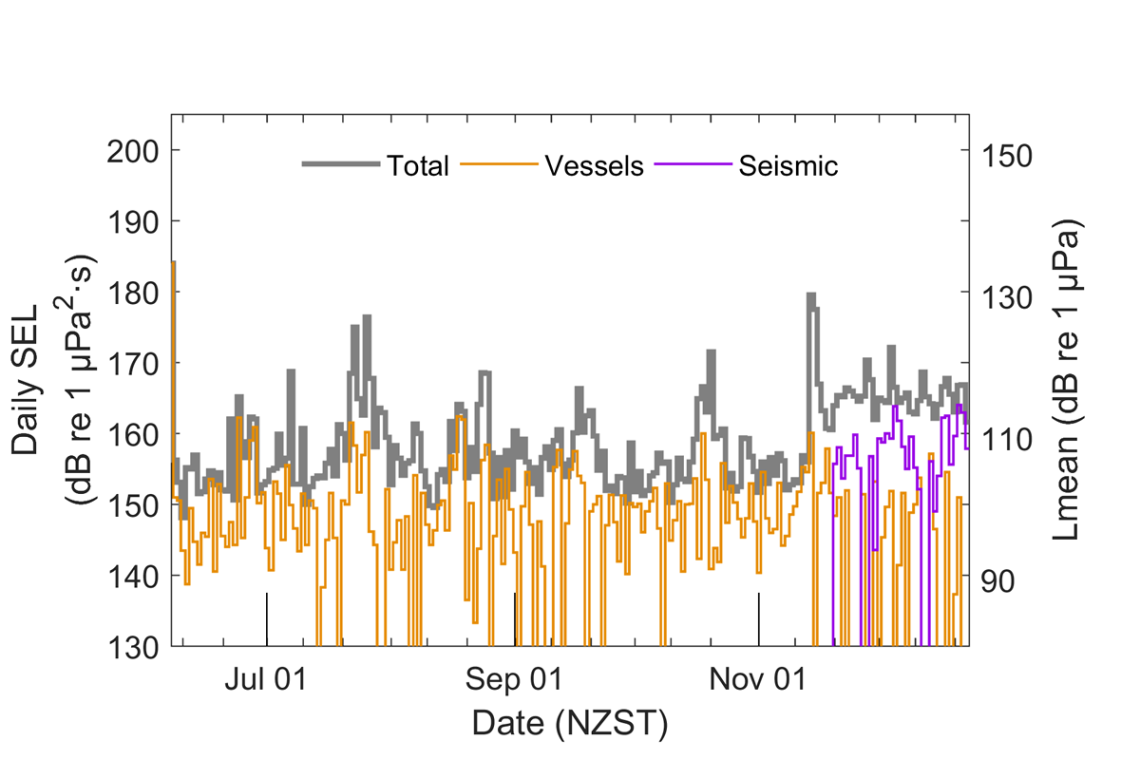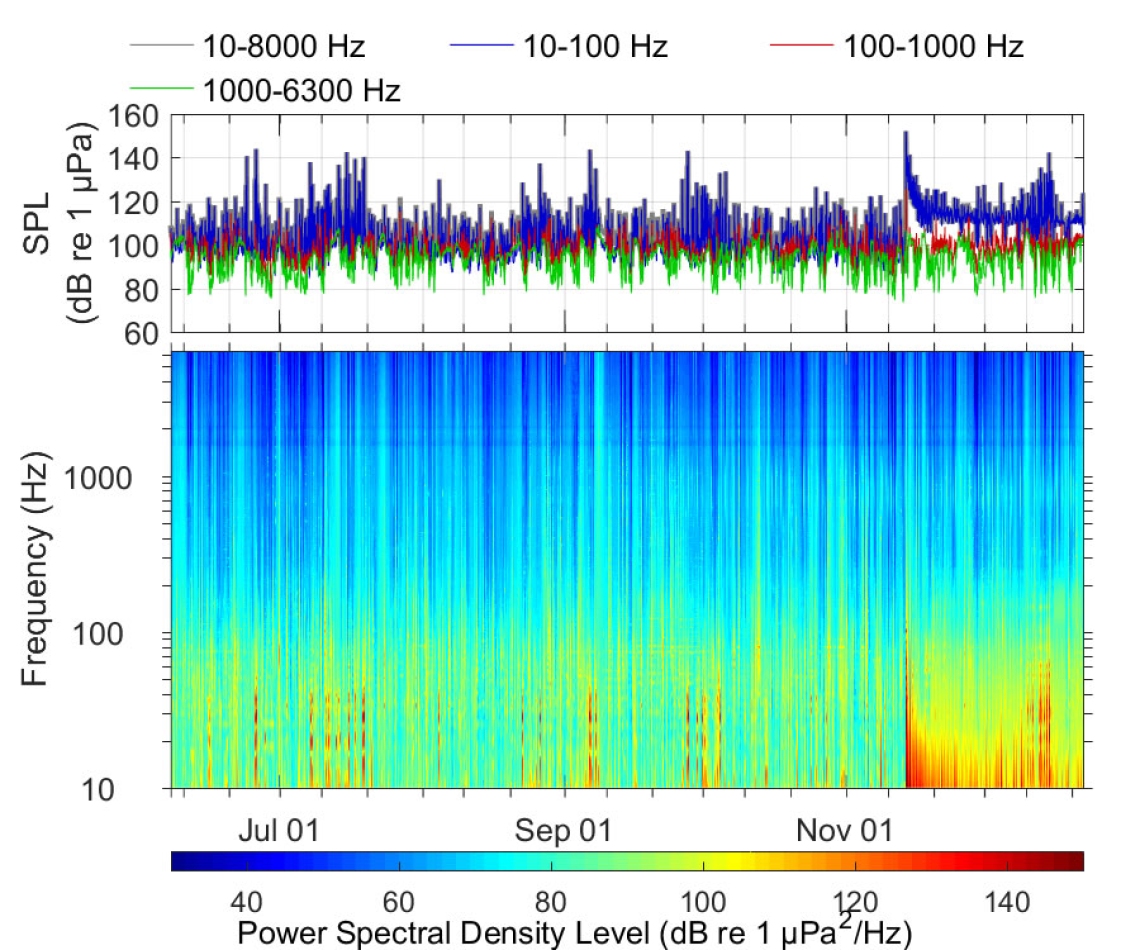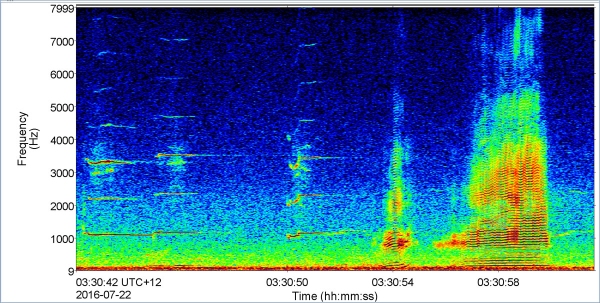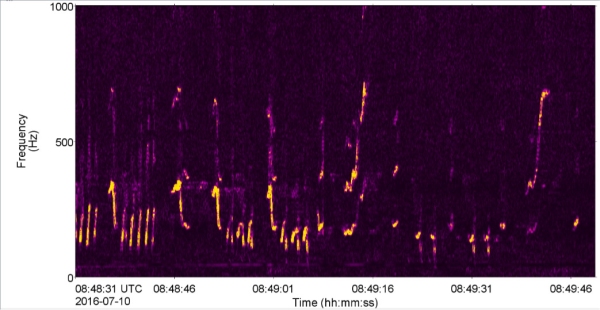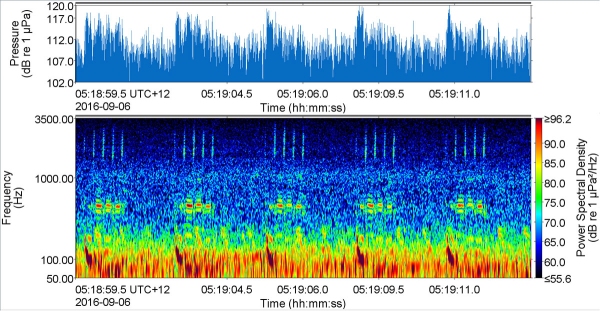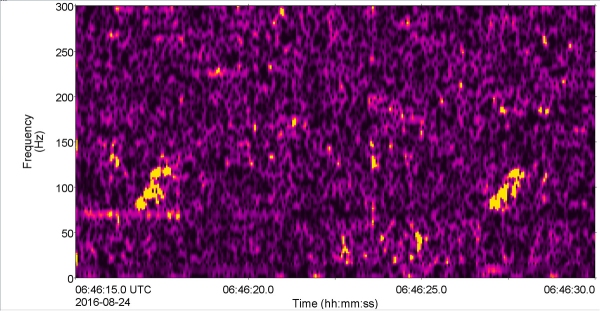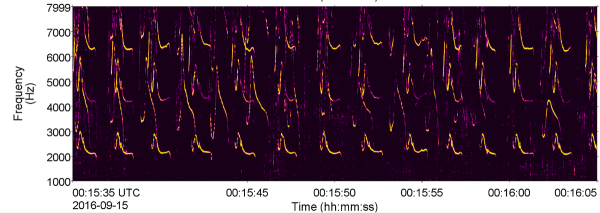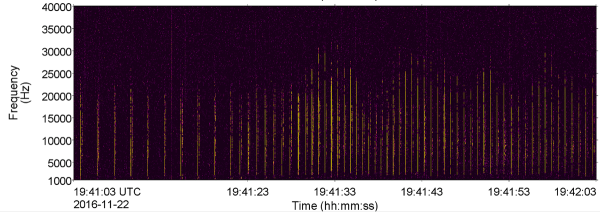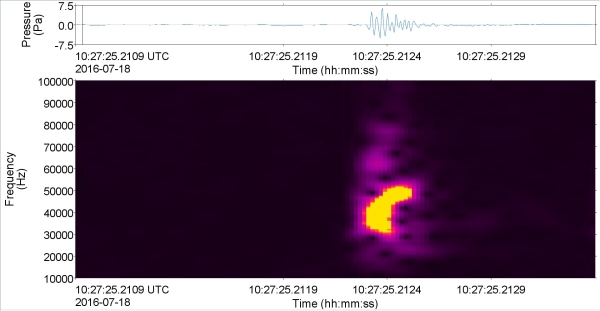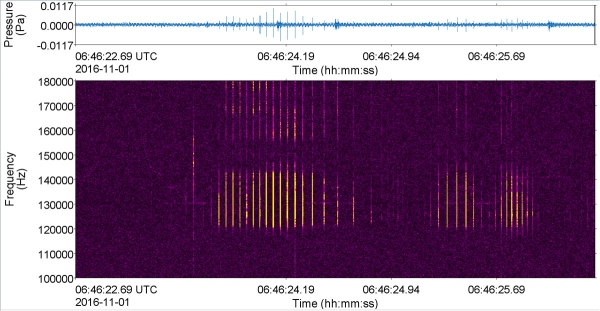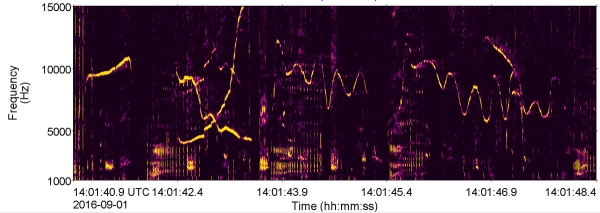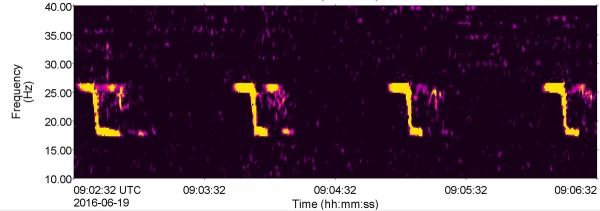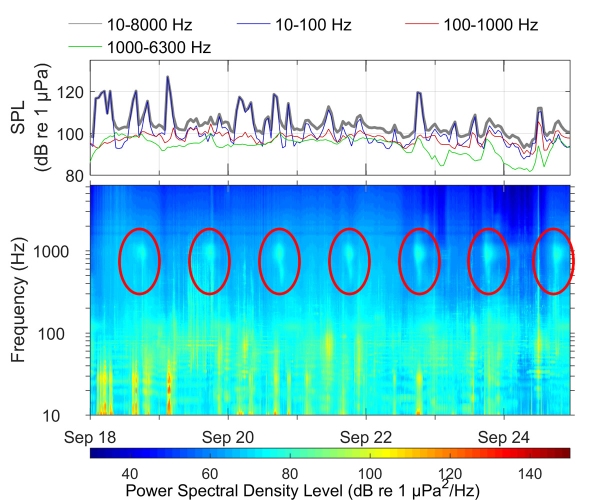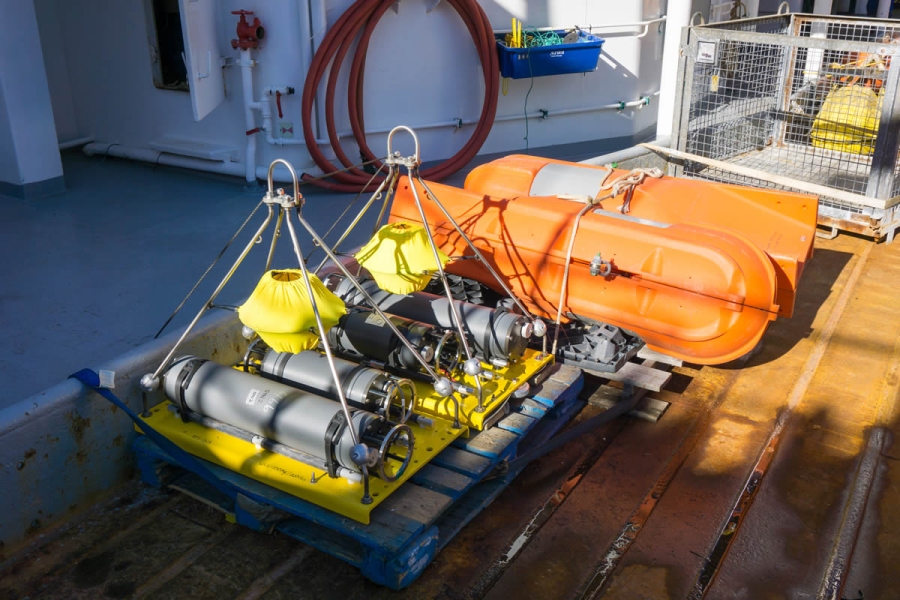The sounds of whales and dolphins rarely seen in New Zealand waters have been recorded in a pioneering underwater sound project.
The issue
Over half the cetaceans (whales and dolphins) on the planet are found in New Zealand waters yet little information is known about their seasonal distribution and abundance. Fixed passive acoustic monitoring (PAM) systems record the sound of everything in the vicinity. This technology is effective in determining the distribution and abundance of vocalizing cetacean species and has the additional benefit of recording both the natural (wind, waves, and earthquakes) and anthropogenic (vessel traffic and oil and gas exploration and extraction) contributions to the soundscape.
The objectives
We use fixed PAM equipment for the first time in the greater Cook Strait region to:
- Document baseline ambient noise conditions in an area known for its strong currents and that is heavily used by industry.
- Address knowledge gaps about spatial and temporal distributions, habitat use, calling behavior, and migration paths of marine mammal species based on acoustic detections of their vocalisations.
This project is providing a unique opportunity to monitor the seasonal presence and distribution of cetaceans from the world’s largest (blue whales) to one of the world’s smallest (Hector’s dolphins) marine mammals. Information obtained from this exciting and novel research will help guide marine mammal conservation and mitigation efforts.
The approach
In June 2016, seven acoustic moorings were deployed in Cook Strait (four in deep water (> 500 m) and three shallow water (< 250 m). In December 2016 and January 2017, a recovery mission was conducted to recover the acoustic moorings. Once recovered, 14 terabytes of acoustic data were downloaded for analysis.
The results
In collaboration with JASCO Applied Sciences, the acoustic data were analysed. Some of these results are provided in the summaries below:
Anthropogenic and ambient noise measurements
Anthropogenic (human generated) noise
The two main anthropogenic (human generated) noise contributors recorded during the monitoring program included vessel traffic and seismic surveys.
Vessel noise was often the dominant and sole contributor to the soundscape at the shallow water stations as compared to the the deeper water environments where the total soundscape was comprised of sources beyond noise from vessels and seismic activity.
Earthquake (14 November 2016)
For many of the stations, the 14 Nov 2016 earthquake was the only irregularity in an otherwise stable soundscape, visible as a large increase in the levels in the 10–100 Hz band level. In fact, the maximum SPL values (164.4 dB re 1µPa) recorded during the study are associated with the earthquake and approached the maximum SPL values that can be resolved by the recording system (165 dB re 1µPa).
Underwater recording of a small vessel
Underwater recording of a small vessel with a large outboard engine
Underwater recording of a large vessel
Marine mammal vocalizations and fish chorusing
The acoustic presence of marine mammals was identified automatically by detectors and verified by the manual analysis of ~300 hours of acoustic data. The manual review of data revealed the presence of:
- Pygmy and Antarctic blue whales (Balaenoptera musculus spp.)
- Humpback whales (Megaptera novaeangliae)
- Antarctic minke whales (B. bonaerensis)
- Southern right whales (Eubalaena australis)
- Pilot whales (Globicephala sp.)
- Sperm whales (Physeter macrocephalus)
- Cuvier’s beaked whales (Ziphius cavirostris)
- Sei whales (B. borealis)
- Hector’s dolphins (Cephalorhynchus hectori).
Two unidentified beaked whale species as well as unidentified delphinid and dolphin species were also detected.
Spectrograms and sound clips
Humpback whale
Below is an example spectrogram and sound clip of a humpback whale call.
Humpback whale (Megaptera novaeangliae) call:
Antarctic minke whale
Antarctic Minke whale call (Balaenoptera bonaerensis)
Southern right whale
Pilot whale
Pilot whale detections at the seven acoustic recorders over time.
Sperm whales
Cuvier's beaked whale
Cuvier's beaked whale detections at the seven acoustic recorders over time.
Hector's dolphins
Unidentified dolphins
New Zealand blue whale
Antarctic blue whale
Fish chorusing
Sounds made by large groups of fish communicating with each other, known as fish chorusing have also been recorded. These sounds play an important role in the behavioural functions of fish species. Fish chorusing events increased as the water temperature increased and often exhibited and seasonal and diel patterns.
Future work
To date, this project has proven successful in collecting high quality data to assess the soundscape of the Cook Strait region. However, we have only just scratched the surface.
Using lessons learned from the first deployment, we adjusted mooring locations. Six instruments were redeployed in February 2017 and will be recovered in August 2017. Stay tuned for more results.
Further reading
- Unidentified whale signals recorded in Cook Strait
- Passive Acoustic Monitoring (PAM) of cetaceans in New Zealand’s Cook Strait region
- Strange sounds recorded in Cook Strait
- Radio NZ: Rare whales' calls heard for first time in Cook Strait
- Eavesdropping in Cook Strait
- Scientist captures sounds of rare whales
- Whales v the Kaikoura quake: Niwa unintentionally records impact of 7.8 on Cook Strait's marine life
- Kiwi scientists record rare whale sounds
Sponsors
- OMV New Zealand Ltd.
- Chevron New Zealand Holdings LLC
- Marlborough District Council
- Woodside Energy Ltd.

